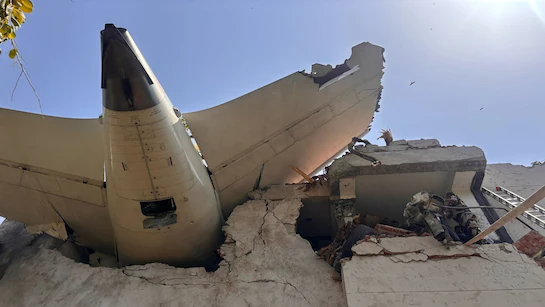Ahmedabad Plane Crash findings
In a catastrophic event that shook the aviation world, an Air India Boeing 787-8 Dreamliner crashed shortly after departing from Ahmedabad on June 12. The aircraft, operating flight AI171 bound for London Gatwick, went down less than a minute after takeoff, resulting in the tragic loss of 260 lives. Only one individual on board managed to survive this devastating Ahmedabad Plane Crash.
According to the preliminary findings of Ahmedabad Plane Crash published by the Aircraft Accident Investigation Bureau (AAIB), the crash occurred within 32 seconds of liftoff from Sardar Vallabhbhai Patel International Airport. The aircraft veered off course and slammed into a nearby building less than a nautical mile from the runway, marking one of the most harrowing air disasters in India’s aviation history.
Ahmedabad Plane Crash : Engine Shutdown Triggered in Seconds
The investigation report uncovered a puzzling and alarming event: both engines stopped functioning shortly after the plane was airborne. This occurred due to the fuel control levers being switched off within just one second of each other, cutting off the power source to the engines. Data retrieved from the aircraft’s black box showed the pilots attempting to manage the situation, but the engines could not recover in time.
A voice recording from the cockpit revealed a conversation between the pilots where one questioned the other’s action. The exchange indicated confusion and no clear decision regarding the fuel cutoff, raising the possibility of a technical malfunction or accidental activation.
Emergency Systems Deployed — But Couldn’t Save the Flight
As power was lost, the aircraft’s emergency Ram Air Turbine (RAT)—a device designed to provide limited backup power—was automatically deployed. CCTV footage confirmed that this system activated as intended. The pilots attempted to restart the engines; one showed slight response, but the second failed entirely. Within seconds, the aircraft plummeted and crashed into a nearby structure housing civilians.
No Weather or Bird Interference
The AAIB’s technical review cleared several typical factors often associated with crashes. The skies were clear, visibility was good, and no bird strikes were recorded. Fuel quality was verified and found to be uncontaminated, eliminating the possibility of a refueling error. Furthermore, the flap settings and landing gear configuration were accurate for a standard takeoff, and the aircraft had no issues related to weight or balance.

Pilot Fitness and Aircraft Condition
Both pilots were found to be fit, experienced, and within regulated duty hours. There were no lapses in credentials, training, or rest periods. The aircraft also had no dangerous goods onboard and was in compliance with its maintenance schedule.
However, one critical point emerged: a known FAA advisory had been issued earlier about a potential design issue with the fuel control switches in the Boeing 787 series. Unfortunately, this advisory had not been implemented on this specific aircraft, raising concerns about oversight and maintenance protocol.
No Evidence of Sabotage, But Human-Machine Interface Questioned
While foul play has been ruled out at this stage, the investigation highlighted that the cause may lie in a design flaw or an interface error between the crew and aircraft systems. The position of the thrust levers post-crash did not match the recorded engine performance, suggesting a disconnect between controls and actual engine output.
This mismatch opens a crucial area of investigation regarding Boeing’s engine control systems and Air India’s adherence to safety advisories. A final report is expected to provide deeper insight into whether mechanical issues or human error triggered the shutdown.
Unimaginable Loss
The incident led to the death of 241 passengers and 19 people on the ground, most of whom were residents of the building the aircraft crashed into. Families are still awaiting answers as aviation regulators and the airline work together with international authorities to pinpoint the exact cause and prevent future disasters.
FAQ’S (Ahmedabad plane crash)
Q1. What led to the Ahmedabad plane crash?
As per the initial investigation of Ahmedabad plane crash, the aircraft lost power after both engines stopped working due to an unexpected fuel supply cutoff shortly after takeoff. The cause of this fuel interruption is still under investigation.
Q2. How many lives were lost in the Ahmedabad plane crash?
The incident claimed the lives of 260 people, including passengers and individuals on the ground. Only one passenger survived the crash.
Q3. Were weather conditions responsible for the Ahmedabad plane crash?
No, the weather was reported to be calm with good visibility. Environmental conditions did not contribute to the crash.
Q4. Did the aircraft have any mechanical issues before departure?
The aircraft was reported to be airworthy with no immediate technical defects found during pre-flight checks. However, a known advisory regarding a possible fuel system flaw had not been addressed.
Q5. What is the function of the Ram Air Turbine in an aircraft?
The Ram Air Turbine (RAT) is a safety device that helps power essential systems when both engines fail. In this case, it deployed automatically but couldn’t prevent the crash.
Q6. Were the pilots qualified and healthy?
Yes, both pilots had valid certifications, were well-rested, and had sufficient experience to operate the aircraft.
Q7. Could pilot error be the reason behind the crash?
There is no conclusive evidence pointing to pilot error. However, cockpit recordings revealed confusion over the engine failure, indicating that the issue might have stemmed from an unintended system action.
Q8. Where did the plane crash occur?
The aircraft went down roughly 0.9 nautical miles from Ahmedabad Airport, impacting a nearby residential building shortly after takeoff.
Q9. Was there any sabotage involved in the incident?
No signs of sabotage were found. The investigation is focusing on possible technical faults or system-related failures.
Q10. Is air travel still safe after the Ahmedabad plane crash?
Air travel continues to be one of the safest forms of transportation. Incidents like this prompt thorough reviews and system checks to prevent future accidents.





